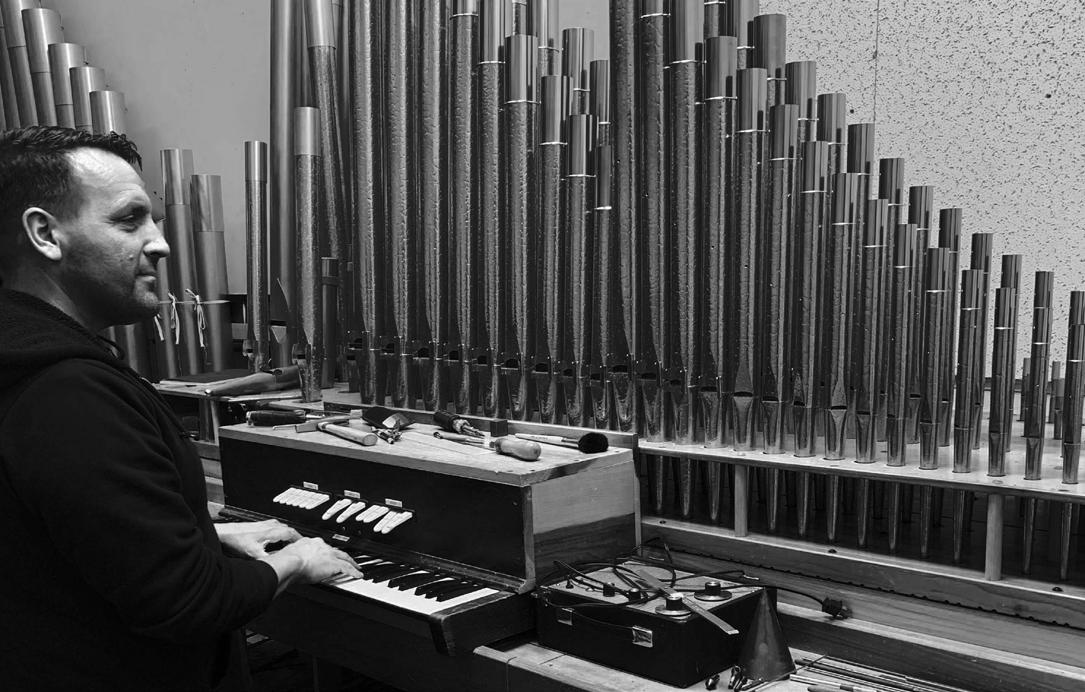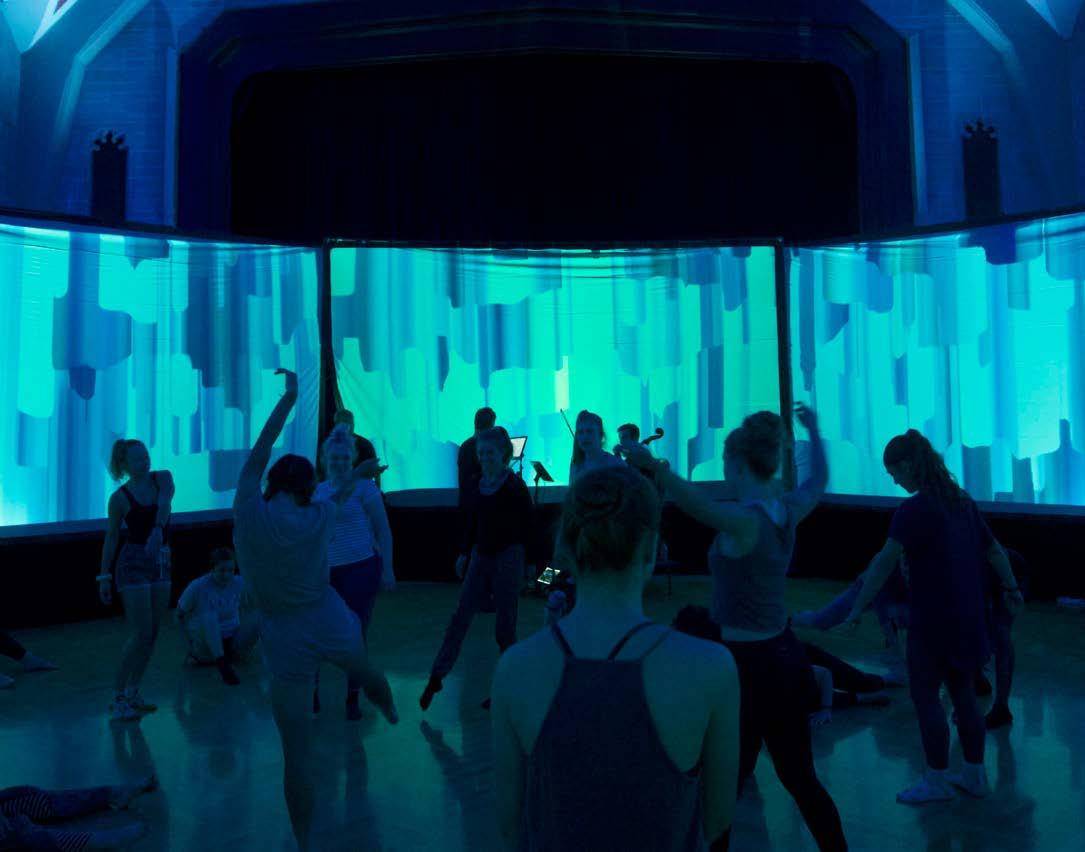
2 minute read
Lifting an Organic Voice
Words by Crystal Hammon Photos by Casey Cronin
From the pastoral to the powerful, a wider range of musical repertoire flourishes after an ambitious renovation of Trinity Episcopal Church’s pipe organ.
Advertisement
It’s no accident that the musical instrument most linked to churches, God and sacred music is almost indestructible. More apt to go out of style than to erode or decay, a pipe organ can last for hundreds of years. No improvements, no problem — unless you’re a church in an urban area with enough interest (and money) to update your pipe organ to meet certain musical goals as well as contemporary aesthetics for sound.
That’s the case at Trinity Episcopal Church in Indianapolis, where an almost 40-year-old organ, made by the nation’s oldest and largest pipe organ builder, Schantz Organ Company, is being inaugurated this fall after a year-long revoicing project that began in July of 2020. Except for a new console in 2011, made by locally-based Goulding & Wood, this is the organ’s first modification since it was installed at the church in 1983.
Made possible by a gift from David and Joan Lewis and a grant awarded by the Allen Whitehill Clowes Charitable Foundation, the revoicing was completed by Warrensburg, Missouri-based Quimby Pipe Organs. “We wanted to make the organ warmer, more vocal, more supportive of congregational singing and more representative of different schools of repertoire for organ and choir,” says Michael Messina, D.M.A., director of music and organist at Trinity. “What we did was not a result of things wearing out, but about making the instrument sound and perform better, and adding some sounds that were missing from the original tonal palette.”

Although the contract to revoice the organ was signed in 2018, Quimby didn’t start until last summer, when many of the church’s concerts and indoor worship services were canceled due to the pandemic. “While it was really hard to not have the organ last year, it would have been even harder if we had concerts and church services going on as usual,” Messina says.
In the hands of skilled artisans such as those at Quimby, an organ’s tonal aesthetic can be reshaped through physical modifications, and the replacement of pipes with others made in different shapes, sizes, and materials. Pipes can also be modified by raising the wind pressure, or changing the ratio between the width and height of a pipe’s mouth.
Messina admires the revoiced organ’s ability to toggle between a whisper and a roar. “It’s the kind of sound that envelops you, and then, when you think it can’t be any more thrilling, the rafters begin to shake, and yet another sound comes along,” he says. “The word ‘awesome’ is such a cheap word these days, but an encounter with this organ as a sonic event is truly awesome. In the church, we are in the God business, and we’re trying to create relationships with and comprehend the most awe-inspiring aspects of the universe. This instrument is truly awe-filled, awe-inspiring and awesome — both aurally and physically — because you can actually feel it in your body.” ■
Trinity has launched a 2021-2022 concert series that showcases the newly-voiced organ played by some of the nation’s most prominent organists, including David Higgs and Bruce Neswick. To learn more about the 2021-2022 Music at Trinity series, go to trinitychurchindy.org/music










